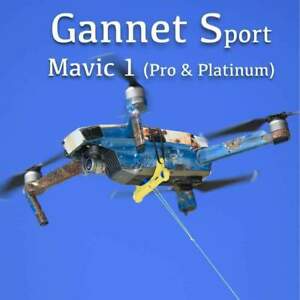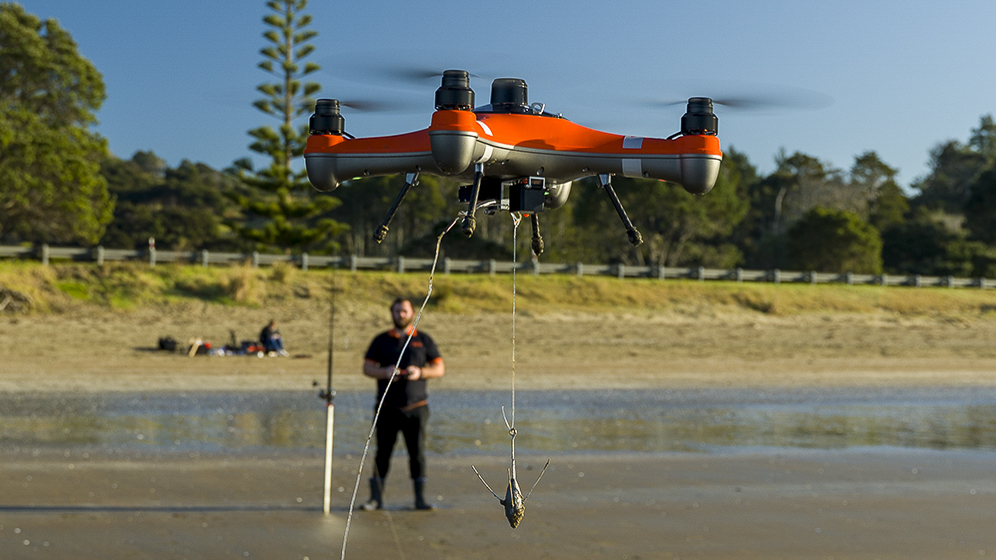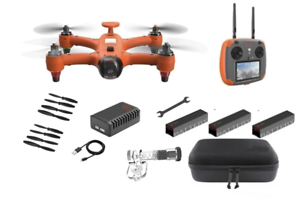
You can now fly a drone if you are a fisherman, and you have always longed to catch the big catch. A drone allows you to easily scout specific areas. Many drones also have a Cable Cam function that allows you the drone to fly like a cable. The cable cam feature is especially useful when you're scouting for fishing spots. The drone can be folded up and put in your fishing bag for when it's not in use.
Fisherman FD1
Is it possible to have a drone that can be used for fishing but not for your own fishing? You might consider purchasing a Fisherman FD1 drone-fishing kit. This drone includes features that can improve your fishing experience. It has an elevated GPS pod, and an altimeterPod for accurate positioning and control. The GPS and the altimeter will reduce interference by the surrounding environment. The drone's compass will always point to north. This prevents you accidentally setting it back. You can also set the camera to capture a color HD real-time view with a push-button remote release. The remote control range is up to 1600m. You can also operate the Fisherman FD1 drone from a greater distance with the new remote control.
The SwellPro Fisherman waterproof drone features a HD camera with FPV and FPV Goggles. The SwellPro Fisherman can carry a 2kg bait and drop it into the water. It can fly up to 30 mins and is waterproofed internally. You can buy an additional camera or FPV goggles to increase the drone's durability.
Cuta-Copter Ex-1
The Cuta-Copter Ex-1 drone is an excellent choice for anyone who wants to fly their own drone. You can capture stunning photos and video at a distance with this drone. It has a range of 3.5 miles and a battery life of five hours. It can fly for 30 minutes at maximum, giving you plenty of time to cast your lure and use the return-to-home feature. The drone is also very stable when hovering so there's no risk of it falling over while you're casting.

Cuta-Copter EX-1 Flying Fishing Drone is water-resistant and floats on the surface of water. The Ex-1 drone can carry up to three kilograms of bait. Although the drone does not include a charger or a battery for charging, you can download the Cuta-Copter mobile app to remotely control your drone from anywhere. This gives you the best of both worlds. Once you are proficient at fishing with your Cuta–Copter Ex-1 drone, it will be an amazing experience.
Upair
The Upair drone fishing kit is much more user-friendly than other models. It can capture amazing footage. It can fly an average of 20 minutes at a distance of 0.5 kilometers. The camera has high resolution and the controller has a 7-inch LCD screen. Upair's GPS and FPV monitor transmission ensure that you always receive the best view of the lake you're fishing from. The drone can be programmed and sent to a destination address. If the signal goes out, it will automatically return home.
Upair comes with a Downrigger Attachment that can be attached to the landing gear on your remote-controlled fishing boat. This feature makes it possible to significantly reduce the amount you need to fish, and instead allow you to spend your time catching fish. The downrigger can be connected with your fishing rod or bait. The drone will fly through the air and drop your bait at the spot you select. For bait drop, attach your drone even to your fishing boats!
Cosee unmanned aircraft system
Cosee's UAS drone fisherman kit includes a few special features that make the Cosee UAS drone fishing system (UAS), an innovative new tool for fishing. It lets you cast your line up to a height of more than 98ft and allows you see the fish you are fishing. It comes with a fish finder, camera, and microphone built in. This will allow you to record your fishing experience. This technology is perfect for surf fishing. It allows you to drop your bait far enough away from the boat while still allowing you to reach deep enough to catch the fish.

In order to take advantage of this unique technology, you'll want to be familiar with the rules and regulations for flying your drone over bodies of water. You'll want to stay about 40-60 feet away from the boat when fishing, and make sure to fly the drone straight up. Keep the drone in a steady, consistent speed so you don't bump into buildings or people. You can also use this drone to capture other fishermen fishing trips, or to share them to your own followers.
FAQ
Do I need any special training to fly drones?
No, you don’t have to learn any special skills in order for your drone to fly. A remote control unit is all you need. You also need to have some basic knowledge of flight mechanics.
How high can you fly a drone without a license?
There is no restriction on the height at which you can fly a drone according to the FAA. They do require that you register your unmanned airplane system (UAS), which includes registration number, model number, weight, size and manufacturer's names, as well as other information.
Where can I find a drone for sale?
You can find many different types of drones online. Some prefer to buy their drones from Amazon, eBay, or Walmart. Others prefer to purchase their drones directly at the manufacturer.
What kind of batteries is a drone using?
The majority of drones run on lithium-ion batteries. The typical drone draws between 3 and 6 volts.
What are the rules of operation when using drones?
Registering your drone with FAA is required. This registration involves information such as the weight, size, battery capability, and operating frequency. A FAA identification number is also required.
What is the difference in a quadcopter from a hexacopter.
A quadcopter, a four-rotor helicopter, flies just like a helicopter. It has four rotors that rotate independently. The hexacopter looks similar to a quadcopter, but it has six rotors rather than four. Hexacopters have more stability and maneuverability than quadcopters.
What is the law regarding drones flying over private property
Recently, the FAA issued new rules regarding commercial drone flight. These rules apply to UAVs with a weight less than 55lbs and that fly at a height of below 400 feet from the ground. Commercial operators must register at the FAA and apply for a license. Local authorities must also approve them if they are operating near airports or in other restricted areas.
Statistics
- According to ZipRecruiter, the minimum hourly wage of drone pilots is $20. (thedroneu.com)
- According to the multiple listing service (MLS), houses and apartments with drone photographs are up to 68 percent more likely to sell than those without pictures. (thedroneu.com)
- According to Indeed, a drone pilot gets paid $25.73 per hour on average in the US. (dronesgator.com)
External Links
How To
How To Fly Drones For Beginners
A drone refers to a remote-controlled aircraft designed for aerial photography, surveillance and scientific research. The technology behind drones has been around since World War II. DJI's Phantom series of quadcopters was the first to be commercially used. From beginner-friendly drones such as Parrot AR Drone 2.0 through professional-grade multirotor craft like DJI Mavic Pro, many types have been available.
There are many methods to fly a Drone, including
-
Remote control - This allows you to control the drone from your hand. There are two main types for controllers: Joysticks or On/Off switches, which can be used to control the drone's flight path.
-
Manual Control- This allows you to control your drone remotely via GPS coordinates. You must keep track of the location where you want the drone to go and follow the instructions from the app.
-
Autonomous Flight - This method involves leaving the piloting duties to the drone itself. It allows the drone to fly independently without any human intervention. To enable autonomous flight, the drone should have a built in camera and sensors capable recording images and data.
-
Triggered Flying - This method works in the same way as manual control. However, the pilot has to manually set up a route for the drone and it follows that route until reaching the endpoint. The drone automatically lands once the route has been completed and returns to the base.
-
Landing Gear – Some drones are equipped with landing gear, which allows them to safely land if they lose power during flight.
-
Goggles: Some pilots use goggles in order to protect themselves against debris when operating.
-
Camera - Some drones are equipped with cameras allowing you to capture photos and videos from above.
-
Obstacles. Some drones can have obstacle avoidance technology that stops them from hitting obstacles.
-
Speed - Drones can reach speeds up to 40 mph.
-
Battery Life - Most drones are capable of lasting between 20 minutes and three hours, depending on the power that you use.
-
Range - Depending on the model, some drones can travel up to 30 miles away.
-
Power source - Some drones require an external power source; others work off internal batteries.
-
Weight - Some drones are lighter than others, while some models can weigh as much as 4 pounds.
-
Size - Drones can range in size from tiny devices that can fit in your palm to heavy crafts that weigh 50 pounds.
-
Price - Drones come in a variety of price categories, including high-end models which can run into the thousands and low-cost options that can start at $100.